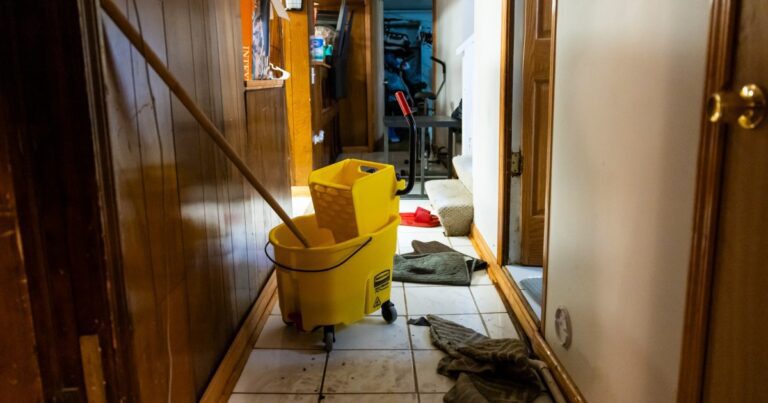This coverage is made possible through a partnership between WBEZ and Millinga non-profit, independent media organization dedicated to telling stories about climate solutions and a just future.
In the Midwest, the clash between wet and dry extremes will have profound consequences for the region's cultural and economic role as a global farmer, producing more than a third of the world's corn and soybeans.
That's according to the federal government National climate assessment out Tuesday. The massive media collection captures the state of climate change across the country, by region and sector. The assessment found that excessive moisture and drought could cause corn yields to decline. Not only is agriculture shifting, but urban life is increasingly complicated by the increasing frequency and intensity of rains and consequent flooding.
The congressionally mandated report is a product of the US Global Change and Research Panel, with contributions from more than 750 climate scientists and experts. Unlike previous iterations, this year's assessment includes a podcast, an art exhibit, and a poem by American poet Ada Limón. The consensus is that without a massive rollback of global greenhouse gas emissions and a doubling down on adaptation efforts, the climate crisis – rising seas, rising temperatures, increased floods and fires – will worsen here and abroad.
The report is designed to provide rigorous, fact-based evidence that cities and states can use.
“A water manager in Chicago can use this assessment to dig in and understand the extreme rainfall that's coming so they can design drains that don't overflow,” said Dr. Arati Prabhakar, director of the White House Office of Science and Technology. . Policy.”
Compared to the first half of the 20th century, the Midwest is a hotter and wetter place than it used to be. Precipitation is expected to increase across the region as temperatures rise, which will mean wetter springs and winters and summers with greater variability. Last July was the hottest on record. So it was the following August, September and now October. As the planet warms, scientists agree that the risk of climate impacts could increase as extreme events become more frequent and severe.
Following last summer's severe flooding in Chicago, the Federal Emergency Management Agency disbursed more than 200 million dollars in federal flood relief to affected Cook County residents. Costly state and federal disasters like these are on the rise. In the 1980s, the country experienced a $1 billion in damage roughly every four months. Now it's closer to one every three weeks.
Despite the growing urgency, the study reports that emissions in the US have declined since their peak in 2007 – and communities across the country are beginning to find ways to mitigate and adapt to climate change. The report finds that in the Midwest, “people are responding in ways that offer hope for the future.”
“The private sector has invested $470 billion in clean energy and advanced manufacturing, electric vehicles, batteries and clean energy projects, which have created more than 210,000 jobs.” said John Podesta, President Biden's senior adviser on clean energy innovation and deployment, at a news conference.
In the Midwest, renewable energy production has increased by more than 275% in the past decade. The report finds that developing more renewable energy could mean millions more jobs.
It's not just clean energy that's on the rise. Since the publication of the last climate assessment in 2018, climate change adaptation and mitigation efforts have increased by 32% and 14% respectively. Plans to develop electrification, energy efficiency, climate smart agriculture and green infrastructure such as urban canopies are taking off. According to the report, among all states in the Midwest, Illinois leads the way.
Juanpablo Ramirez-Franco covers climate change and the environment for WBEZ and Grist. Follow him to X at @__juanpab.

